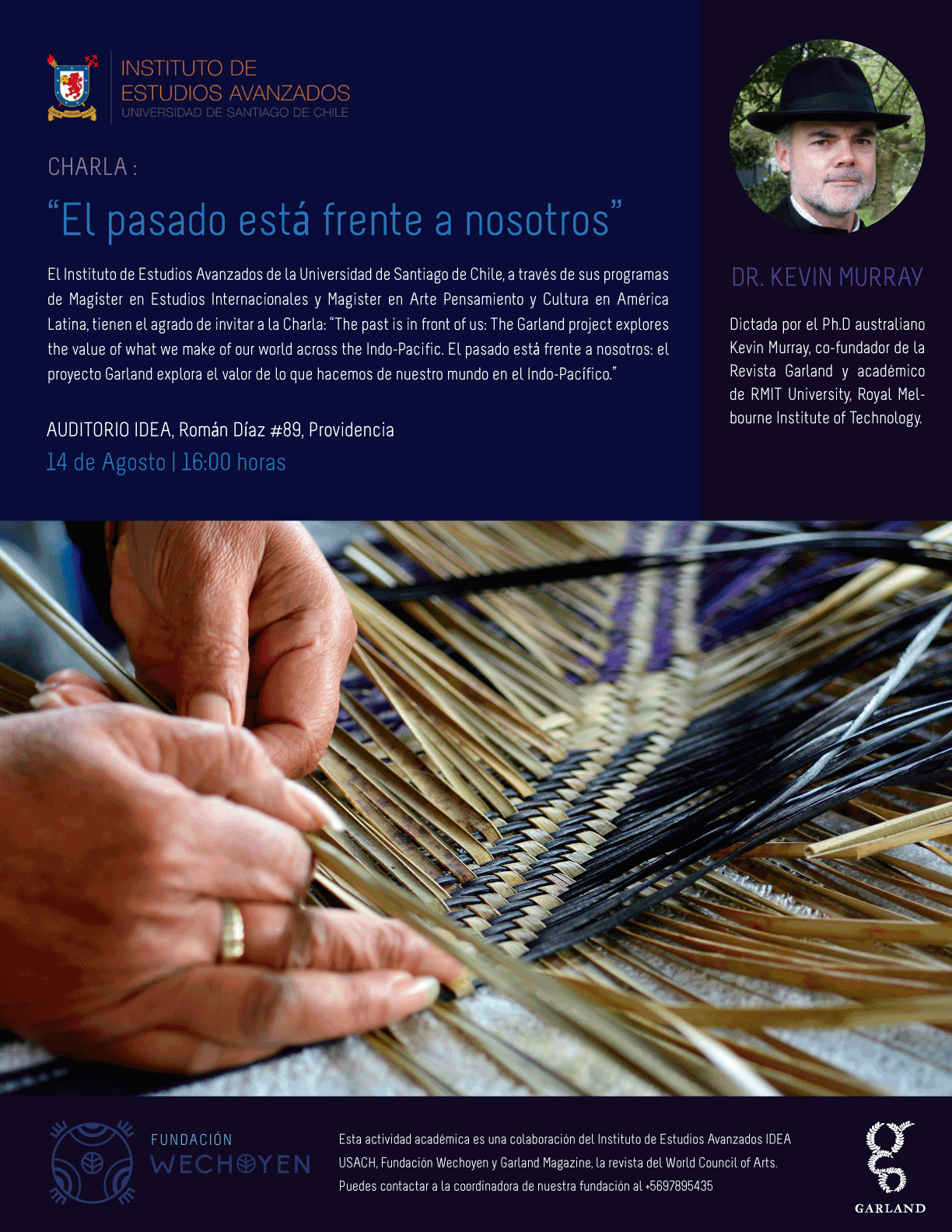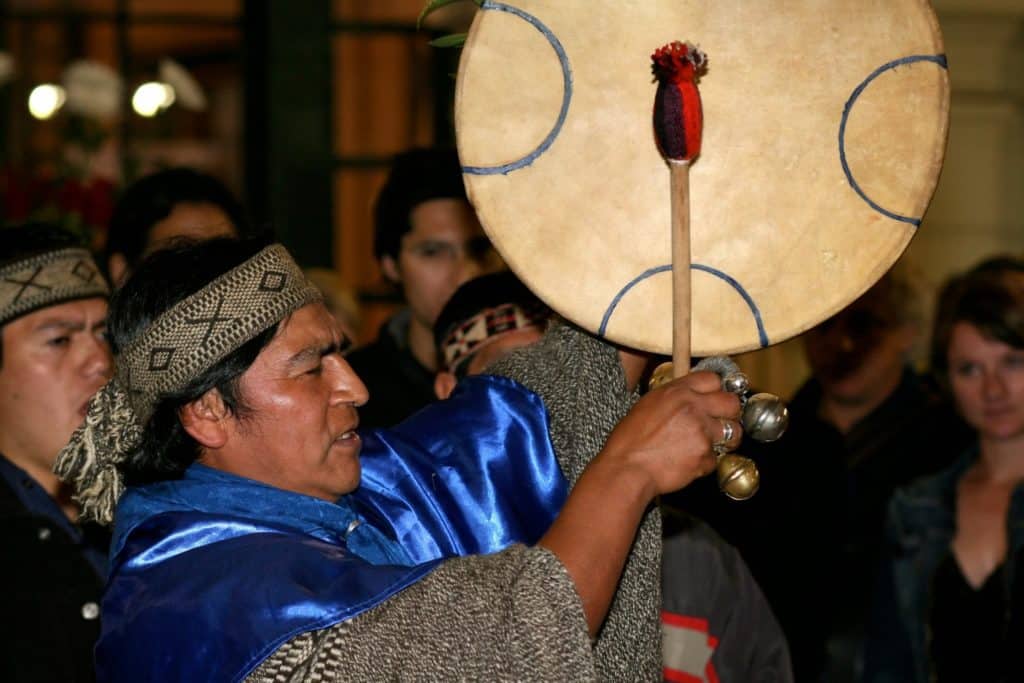The current Garland journey will conclude in South America, December 2020. In preparation, a lecture in collaboration with Fundación Wechoyen will be presented describing the journey thus far.
INVITACIÓN | CHARLA 14 DE AGOSTO
EL Instituto de Estudios Avanzados de la Universidad de Santiago de Chile, a través de sus programas de Magíster en Estudios Internacionales y Magister en Arte Pensamiento y Cultura en América Latina, tienen el agrado de invitar a la Charla: “The past is in front of us: The Garland project explores the value of what we make of our world across the Indo-Pacific. El pasado está frente a nosotros: el proyecto Garland explora el valor de lo que hacemos de nuestro mundo en el Indo-Pacífico.” Dictada por el Ph.D australiano Kevin Murray, co-fundador de la Revista Garland y académico de RMIT University, Royal Melbourne Institute of Technology.
Kevin Murray es doctor en Psicología Narrativa, y ha extendido este estudio al rol de los objetos en contar historias (Garland Magazine), en paralelo al estudio de conocimientos del sur. Es profesor adjunto en la Escuela de Arte RMIT Australia y coordinador de “Sangam: una plataforma para asociaciones de artesanía y diseño”, desarrollada a partir de una iniciativa de tres años en el “Consejo de Australia”, que desarrolla estándares para mejores prácticas en diseño de asociaciones en la región. Esta instancia estará acompañada y presentada por la Fundación Wechoyen, organización que lleva 10 años trabajado para la promoción, defensa y asociación de comunidades de Pueblos Indígenas en Sudamérica, que recientemente estrena un breve trabajo para la promoción del arte Mbya Guaraní del Paraguay.
Esta actividad académica se realizará el 14 de agosto, a las 16:00 horas, en el Auditorio de IDEA, ubicado en Román Díaz #89, Providencia.
In modernity, the dominant understanding of history is development, where “backward” cultures seek to follow the Western model. The role of creativity is then an individual’s capacity to break with tradition. The “contemporary” is a thin slice of time that has no room for ancestors or future generations. The alternative model of “renaissance” attempts a connection to the ancient world by translating the past into the present. This involves creativity as a form of custodianship rather than individual freedom. In the wider world today, we see a generation of artists who are recovering the craft skills of their forebears. Many of these are Indigenous postgraduates who are using the discipline of the academy to help re-build their culture after colonialism. This includes an Iranian women jeweller, a Zulu fashion designer, a Papua New Guinea adornment maker and Australian Aboriginal artist. The talk reflects discoveries made during the Garland project, which is mapping the creative energies of the Indo-Pacific. This will conclude in South America at the end of next year. This lecture is a way of asking the question of what approaches to the past are proving productive in countries like Chile.



